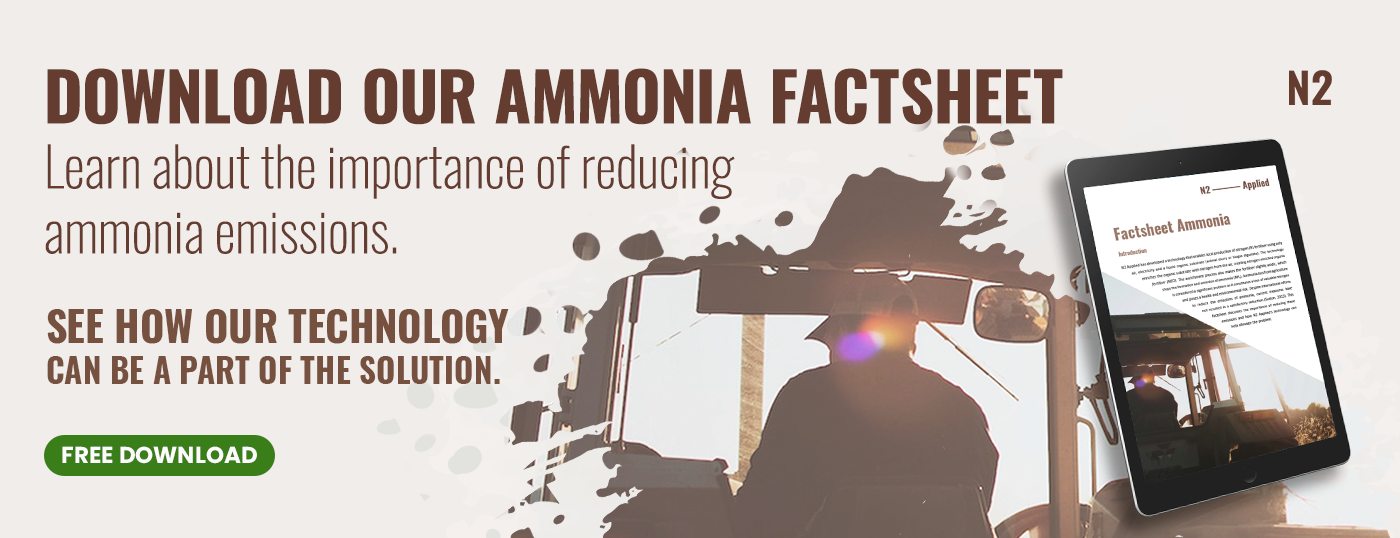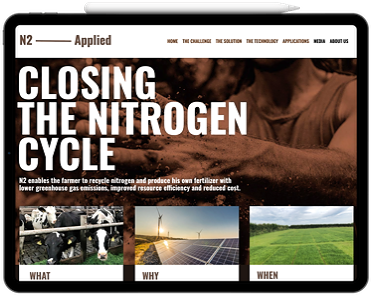Nitrogen Pollution occurs when a number of compounds, from ammonia to nitrous oxide react with air or water in the environment. As farmers have scaled up food production in response to population growth, nitrogen pollution has increased dramatically over the last century. When these chemicals are released into the air and water, they contribute to climate change and can cause “dead zones” in rivers, lakes and coastal areas.
Reducing nitrogen pollution is an urgent and global environmental goal, but managing nitrogen use is a difficult task. Nitrogen is a key nutrient that helps plants and livestock grow, but excess nitrogen pollutes the environment. Below are some best practices and technologies available to help reduce nitrogen pollution on farm.
Ammonia Abatement
Agriculture generates 94% of all ammonia (NH3) emissions in the EU, with most of the contribution stemming from livestock manure management and synthetic nitrogenous fertilisers. Covers can be utilised in storage to minimise slurry or digestate exposure to air and prevent NH3 emissions. Acidification of slurry is another method of NH3 emission alleviation and works by lowering the pH of the slurry or digestate. This can offer a solution to NH3 loss both in storage and on field application. N2 Applied have developed a plasma treatment technology which naturally acidifies slurry or digestate in a sustainable way. Unlike other acidification methods which use sulphuric acid inputs to lower pH, N2 Applied’s solution uses only air and electricity. The areas of best practice above mainly highlight ways to reduce volatilisation, a form of nitrogen pollution to air.
Agriculture generates 94% of all ammonia (NH3) emissions in the EU
Application Timings
On application to land, best practice should be observed to minimise losses, such as applying slurries, digestates or urea fertilisers when soil conditions are cool and moist. Timing is crucial and should be centred around the crop uptake of available nitrogen to reduce leaching. Nitrogen applied to crops when they are more mature can decrease the potential for NO3 leaching to water courses from nitrogen applications made in excess of crop uptake. Application timing is important when considering ammonia losses too, but it can also have other benefits. Applying nitrogen at the right time when the crop can take it up can prevent the formation of other GHGs such as N2O. Another factor is making sure ground conditions are suitable for application.
Reducing Run Off
Applications of nitrogen under the correct environmental conditions can help to prevent run off. Run off occurs when nitrogen is applied during or before precipitation events and can be carried with soil into the local environment, specifically water courses. Applying in conditions that suit uptake from crops can be achieved by scheduling applications around weather patterns. The use of buffer strips can aid the absorption of run off with deep rooted plants to help filter or uptake the nitrogen. These can be placed on field margins or around water courses.
Precision Farming
Different application methods have been developed which minimise the exposure of slurry or digestate to air upon application and aid with soil infiltration. Band spreading by trailing hose or dribble bar applies the slurry closer to the soil to minimise exposure to air and allow more precision application than broadcast spreaders. Trailing shoe application applies the slurry directly to the soil surface and reduces volatilisation loss even further. Injection of slurry into the soil either by mechanical or pressure-based means prevents exposure to the air and applies slurry directly to the soil but is also the most invasive method.
With regards to synthetic nitrogenous fertiliser use, precision farming is widely available and a good method to increase the accuracy of nitrogen applications. Drones and satellites can map fields to variably control the rate of nitrogen application to crops that have a greater uptake potential. In the same process field boundaries are mapped digitally and connected to the fertiliser applicator screen therefore ensuring the nitrogen is spread within the field only.





